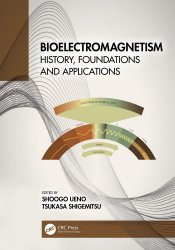
Название: Bioelectromagnetism: History, Foundations and Applications
Автор: Edited by Shoogo Ueno, Tsukasa Shigemitsu
Издательство: CRC Press
Год: 2022
Формат: PDF
Страниц: 347
Размер: 13.66 MB
Язык: English
Bioelectromagnetism has been gradually developing and expanding into a variety of fields in engineering, biomedical engineering, life science, medicine and biology. Bioelectromagnetism: History, Foundations and Applications provides an overview of the field and its developments; from its inception and growth through the twenty-first century, to the latest advances in electro- and magnetobiology and hazard evaluations of electromagnetic fields.
It is organized into three sections, each focusing on specific regions of bioelectromagnetism. It begins with the foundations of the field and its history, with a chronological treatment of the major subjects in bioelectromagnetism. The relationship between atmospheric electromagnetic phenomena, geomagnetism and biological systems are presented. It then discusses the many benefits of bioelectromagnetism: electroreception, magnetic navigation, magnetic sense and magnetic responses of plants, birds, animals and humans. It then moves on to human health issues and the impact of bioelectromagnetism. It also provides practical guidance on how to set safety guidelines. Finally, it looks forward to the future prospects of the field based on the latest research in the field.
In exploring both the history of the field and the latest developments in today’s research advances, this book provides a comprehensive and self-contained treatment on the subject, which will be a valuable reference for researchers in biophysics, medicine, electrical engineering and biomedical engineering.
It can be used as a companion to the editor’s previously published books: Biomagnetics: Principles and Applications of Biomagnetic Stimulation and Imaging (9781482239201, 2016, CRC Press); and Bioimaging: Imaging by Light and Electromagnetics in Medicine and Biology (9780367203047, 2020, CRC Press).
Key Features:
Provides both a historical view of the field, along with the latest developments in the field
Contains practical guidance for researchers on how to set safety guidelines for those working in the area
Edited by authorities in the field, with chapter contributions from specialists